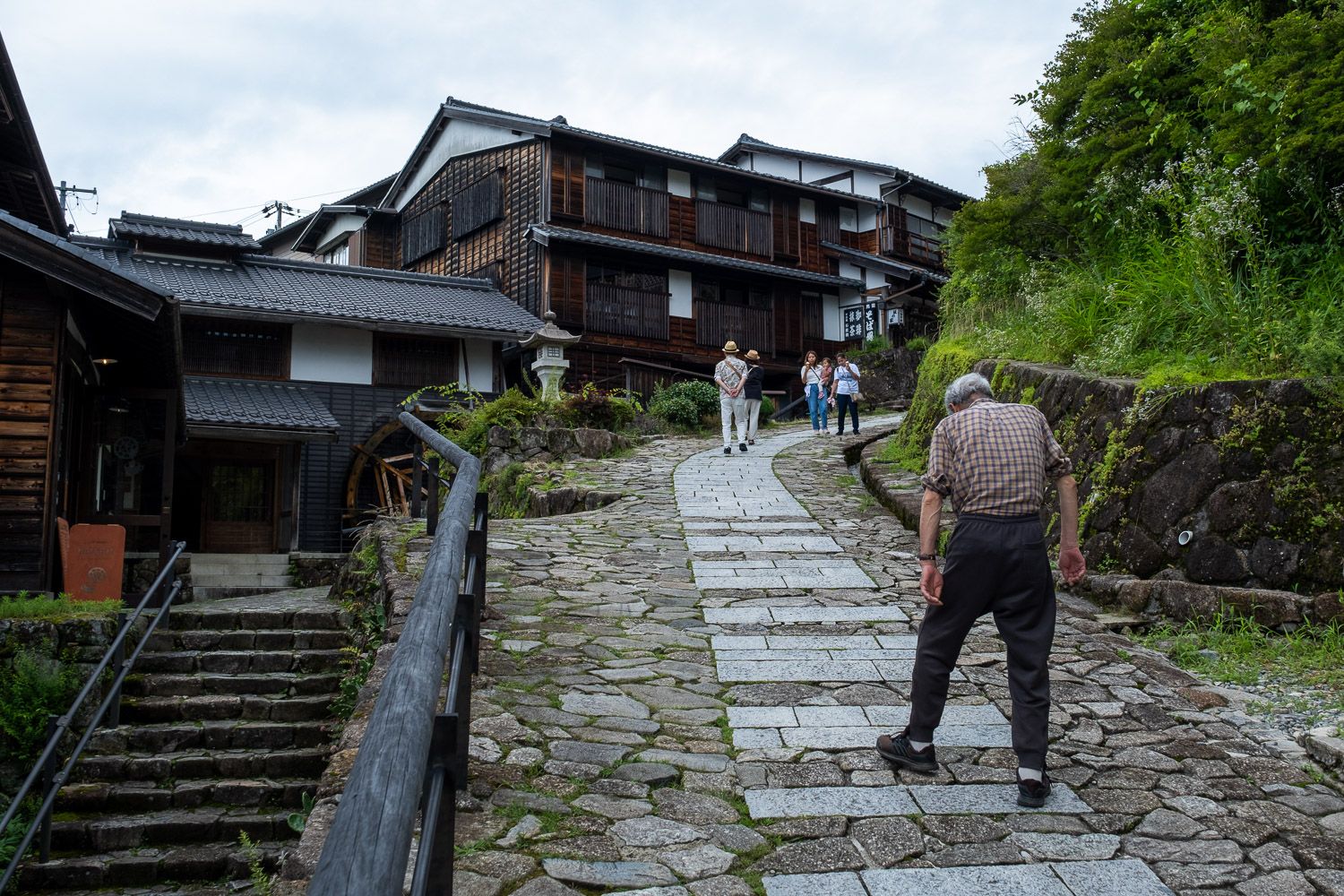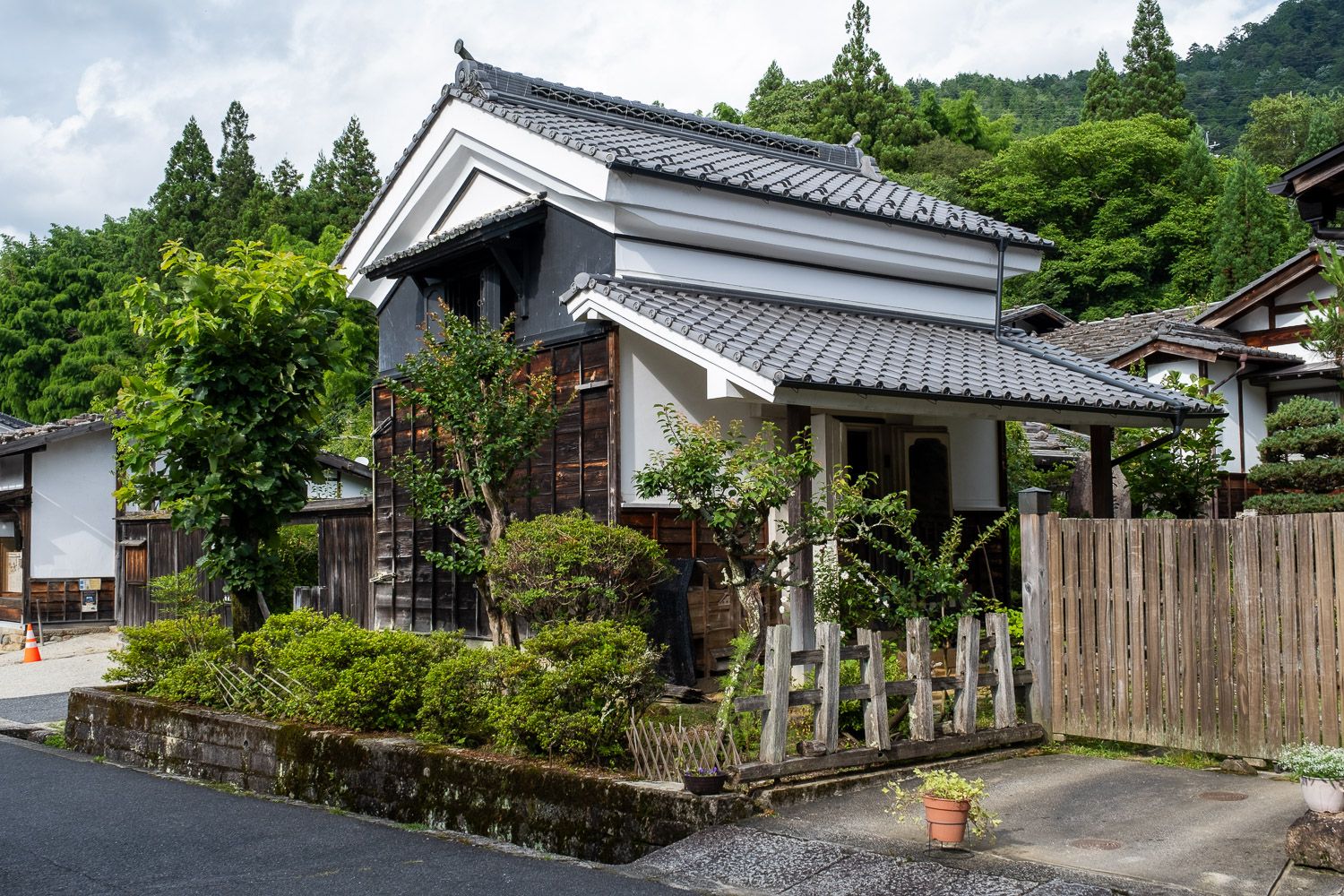Walking Kiso-ji

It's summer time in Japan and given the grueling temperatures here in Tokyo, you really do not want to step outside anytime after 6am and before 6pm. To escape this scorching heat, we decided to head for the mountains this past weekend and go for a hike in Kiso valley (木曽路) that stretches from Nagano to Gifu prefecture.
Kiso-ji is part of the Nakasendo (中山道), one of the two ancient trade routes between Kyoto and Tokyo, the other being the Tokaido (東海道). While the latter extends along the southern coast of Honshu, the Nakasendo runs through the mountains. Given its history as an important trade route, there are lots of small "post towns" which served as local distribution centers and resting spots for travelers. The ones in Kiso-ji in particular are known for being carefully maintained/restored, so it really feels like Japan hundreds of years ago.

Nojiri
The starting point of our trip was Nojiri in Nagano prefecture. To get there, we took the Azusa Express from Shinjuku Station to Shiojiri in Nagano where we changed trains to the Chou Line towards Nakatsugawa. The train runs along the Kiso valley almost all the way from Shiojiri, providing a first glimpse of the the trail ahead.
Although Nojiri is less well-known than some of the other stops along Kiso valley, we found it to be a lovely town that seemed a bit more "normal" than the more touristy post towns. While those can appear almost like museums with little life left other than the tourists, Nojiri is more down-to-earth and you can feel that people are actually living there. Having lunch at the lovely Coffee Katana, we met other town folks stopping by for a coffee and learned that there would even a Matsuri (summer fest) later that day. Unfortunately, we were not able to stick around since the first stage was still ahead of us: up the mountain and onwards to Nagiso.
Nagiso
The hike to Nagiso took us about three to four hours at a relaxed pace. Although it was a long weekend in Japan, we only met a handful of elderly locals, two cats, and one snake. Thankfully, we did not encounter any bears, even though the number of bear bells set up along the trail could make you believe that one might be lurking behind every corner. The bears you would find in these parts of Japan are all black bears which are –literally– a different animal than the brown bears they have up in Hokkaido. I would not trust a bell to keep those away.
Our accomodation for the first night was the fantastic Hostel Yui-an. Situated a bit up the mountain, it is hard to miss when coming from Nojiri. Its owners have renovated an 200 year-old wooden house with lots of imagination and attention to detail. The result is a funky, yet warm guest house with a stunning view over Kiso-ji.


Magome
While our initial plan was to continue from Nagiso towards Tsumago, and then finally to Magome, our hosts recommended us to swap things around. Apparently most folks walk the other way because it makes for an easier hike. So, the next day we got on a bus in Nagiso bound to Magome and started walking back.
Magome is perhaps the most well-known post town in Kiso valley, and it was the only spot on our route situated in Gifu prefecture. The town features a lot of cafes, street merchants, and shops selling traditional wood crafts from the area. That does not take away from the picturesque scenery, but one does wonder if anyone is actually living there (and what that is like).
The trail from Magome to Tsumago is equally beatiful and indeed not very difficult. Along the way, you come across old resting places and tea houses with some amazing snacks and very friendly locals. Interestingly, one of the owners told us that most hikers by far walking the Kiso-ji, these days, are foreigners. Given that it's not that easy to reach from Tokyo and it's also not super well-known abroad, I would have bet that residents from nearby Nagoya are in the majority here.

Tsumago
Tsumago turned into the final stop of our journey. Just like Magome, walking through Tsumago feels like stepping into old-timey Japan. The historic houses look stunning against the backdrop of the Nagano mountains. The nearby river has a gorgeous azure color. And yet, our personal highlight was something different.
For our second night, we stayed in nearby Otsumago with an elderly lady renting out two tatami rooms in her house. You will not find her on Booking.com and she does not have a website, but our stay there was absolutely lovely. For two other travelers and us, she put up some amazing Japanese home food, both for dinner and breakfast the next morning. To go along with that, she had great stories to tell from 50(!) years of hosting guest there – vegans who she did not know what to serve, full-body tattooed bikers that played boardgames with her, and other tales – all-around great fun!


So, we leave Kiso-ji with very fond memories of the scenery and the people there. So much so that I'd also like to explore other parts of the Nakasendo. Gifu has some really stunning nature that I've yet to see. Shiga prefecture with lake Biwa (Japan's biggest lake) is supposed to be lovely as well. And who knows, if I ever have two weeks of spare time on my hands, I might as well walk the whole thing back to back, making sure I stop by in Otsumago again.

